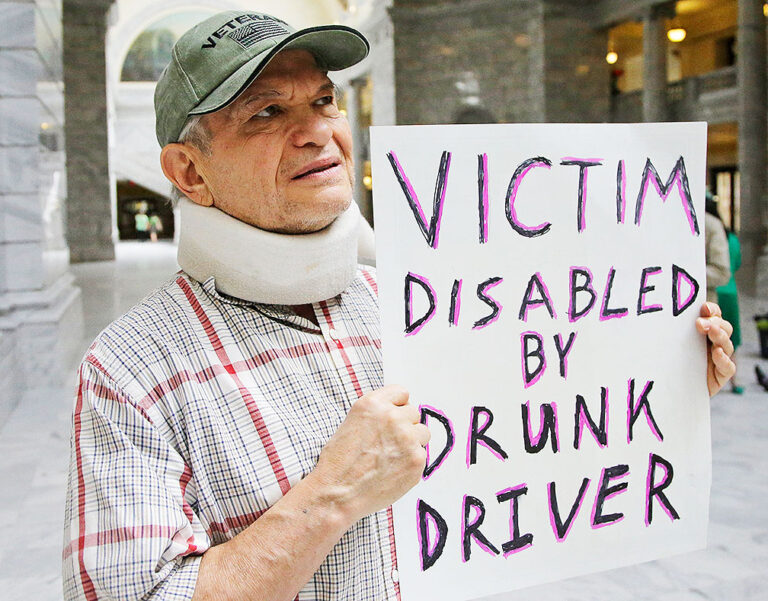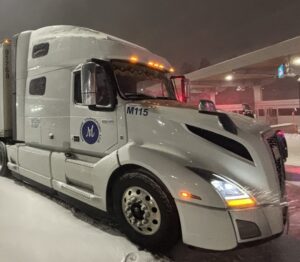
SALT LAKE CITY — Traffic deaths decreased in Utah after the state enacted the strictest drunken driving laws in the nation five years ago, new research published Friday by a U.S. government agency shows.
The findings provide initial validation for conservative lawmakers who passed the law over concerns from restaurant and tourism industry lobbyists.
In a study published Friday by the National Highway Traffic Safety Administration, researchers write that, in the years after Utah changed the drunken driving threshold from .08% to .05% blood-alcohol content, the number of crashes and fatalities fell even though drivers logged more miles.
“Changing the law to .05% in Utah saved lives and motivated more drivers to take steps to avoid driving impaired,” said Dr. Steven Cliff, the agency’s deputy administrator, who encouraged other states to consider similar action.
The findings mark a triumph for Utah’s Republican-controlled Legislature, which voted to decrease the legal limit in 2017 over concerns from restaurant and tourism industry lobbyists. They and other opponents argued it would be ineffective and cement Utah’s pious reputation at the expense of the growing number of visitors and residents who aren’t part of the Church of Jesus Christ of Latter-day Saints.
Utah, where roughly 60% of the population are members of the faith, has long enforced some of the nation’s strictest liquor laws. All spirits and wine are sold at state-run stores. Bartenders are required to use specialized spouts to ensure they pour no more than 1.5 ounces of a primary liquor in any mixed drink. And beer can be sold in grocery stores only if its alcohol-by-volume content is less than 5%.
When the state lowered the threshold for impaired driving from the nation’s standard .08% blood-alcohol content, lawmakers argued it would make driving safer.
The National Highway Traffic Safety Administration study shows that there were fewer crashes and lower alcohol involvement both after the widely-publicized law passed in 2017 and after it went into effect in 2018.
In 2019, the first full year with the law in effect, there were 225 fatal crashes and 248 fatalities in Utah. Though drivers logged more miles, that was less than the 259 fatal crashes and 281 fatalities in 2016, the year before Utah changed its law.
The change meant a 150-pound (68-kilogram) man would be over the 0.05% limit after two beers, while a 120-pound (54-kilogram) woman could exceed it after a single drink, though that can be affected by several factors, including how much food a person has eaten, according to the American Beverage Institute, a national restaurant group.
Crash and fatality rates also fell in neighboring states but not as significantly as they did in Utah.
Crashes per mile driven fell 19.8% from 2016 to 2019, which was much more than the 5.6% reduction rates for the entire United States.
The drunken driving arrest rate increased after the Utah law went into effect, rising from 76 to 84 arrests per 100,000 residents between the fourth quarter of 2018 and the fourth quarter of 2019.
Additionally, survey data included in the study also suggests more people who consume alcohol changed their behavior after the law went into effect. In 2018, 1 in 8 drinkers said they made sure transportation would be available when drinking outside the home, either by a designated driver or ride-hailing service. In 2019, more than 1 in 4 people surveyed said they made sure it would be available.
The revised blood alcohol level law also appears not to have affected tourism. Alcohol sales and overall visitor spending increased steadily from 2009 to 2019 and didn’t experience a dip after the new law went into effect in 2018. The tourism industry struggled through the pandemic but is slowly rebounding, data from the Kem C. Gardner Policy Institute at the University of Utah show.
The National Safety Transportation Board has since 2013 encouraged states to follow Utah’s lead. Lawmakers in states including Delaware, New York, Oregon, Hawaii, California and Michigan have considered changing their laws. But apart from Utah, all states use .08% as the legal blood-alcohol limit.
The Associated Press is an independent global news organization dedicated to factual reporting. Founded in 1846, AP today remains the most trusted source of fast, accurate, unbiased news in all formats and the essential provider of the technology and services vital to the news business. The Trucker Media Group is subscriber of The Associated Press has been granted the license to use this content on TheTrucker.com and The Trucker newspaper in accordance with its Content License Agreement with The Associated Press.














